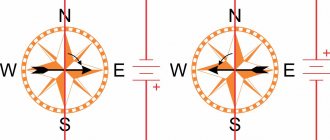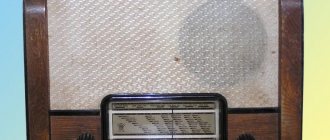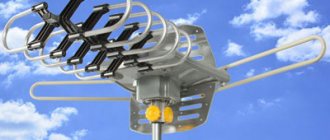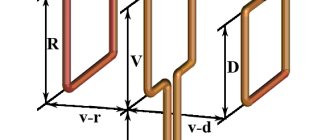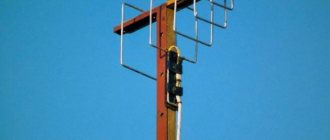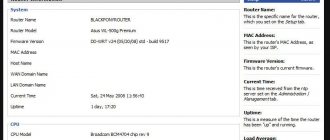Mobile Internet is still inferior to home Internet in speed. Subscribers are not always in a stable coverage area. If the signal is weak, page loading speed will be slow. One solution is an external antenna for a USB modem. You can either buy it or make it yourself from available materials.
- 2 What types of 3G/4G antennas are there?
- 3 Making an antenna from a tin can
- 4 Wire antenna
- 5 Kharchenko Antenna (biquadrat): simple step-by-step instructions
5.1 Video: how to make a Kharchenko antenna
In what cases is an antenna needed for a modem?
The antenna will improve the mobile Internet if there are two or even one division on the signal icon. The external antenna components will pick up the signal where the built-in antenna cannot. If there is no signal at all, there is a chance that even an external antenna will be powerless in your case.
Many modems have a connector on the side for connecting a cable from an external antenna
If the problem is only in speed - there are a lot of bars, most likely the reason is that the operator's base station is overloaded with requests from subscribers. Even if you install an antenna, the speed will not increase. In this case, it is recommended to change the operator or try to point the antenna at another company tower.
frequency range
The instructions for each cell phone, as well as a modem for the mobile Internet, indicate the frequencies at which cellular operators broadcast their signals.
Antenna for modem
Recommendation. The shape and size, respectively, and the characteristics of the purchased or manufactured antenna depend on the frequency of the received signal.
Broadband devices can be classified as a universal type; their performance will be mediocre. If you know the exact broadcast frequencies of the operator in the region and select an antenna specifically for these frequencies, the result will be an order of magnitude higher.
Standards of some Russian cellular operators (frequencies in MHz):
- UMTS: UL/DL – 1920-1980 (880 – 915)/2110 – 2170 (925 – 960);
- CDMA: UL/DL – 453 – 457.5/463 – 657.5;
- 4G: UL/DL – 2500 – 2570/2620 – 2690.
Clarification. First you need to make sure what standards the USB modem you are purchasing will work with. Next, clarify that it has a place to connect an external antenna. Then find out what frequencies this standard works with and select an antenna.
What types of 3G/4G antennas are there?
Antennas (both purchased and homemade) are divided into several types depending on several indicators. If we talk about the installation method, there are indoor or outdoor antennas. The latter are more effective because they work in open space, where there is less interference. They are suitable for those subscribers who live far from the tower.
Indoor antennas are not as effective as outdoor antennas
Based on the receiving signal, antennas are divided into broadband and narrowband. The first ones are more functional - they are capable of receiving 2G and 3G signals when, for example, 4G does not work.
Antennas are also divided into directional, omnidirectional and sectoral. The last two types are capable of catching signals from several towers at once. There are also conventional devices and MIMO antennas - advanced equipment with two antennas at once, which receive the signal separately from each other, but transmit the signal to the modem simultaneously. They can increase speed up to 100 Mbit/s.
The MIMO antenna essentially has two receivers, hence its effectiveness
Depending on the presence of an amplifier in the antenna, devices are divided into active and passive. Passive ones, where there is no amplifier, do not improve the mobile network signal as much as active ones, but they do not need to be connected to an outlet (the amplifier is powered by an electrical network).
Varieties
DIY 4G antenna for modem
Such devices differ not only in price and size, but also in appearance. There are several of them:
- wave channel;
- panel;
- pin;
- parabolic.
The most suitable antenna for small built-up areas is the “wave channel” type antenna. It is known as the Yagi antenna. Structurally, the model is made in the form of vibrators (half-wave dipoles) located parallel to each other, located on the radiation line in the same plane. It consists of an active and many passive vibrators. This is a device from the class of traveling wave catchers. This design was invented and implemented by two Japanese, Yagi and Uda, back in 1926.
A directional antenna changes its characteristics if:
- length of dipoles;
- diameter of dipoles;
- the distance between them and the active vibrator;
- the presence of a passive element (reflector) behind the active vibrator;
- the number of passive elements (directors) in front of the active vibrator.
Factory-made models are known, such as BS-2000-17, BS-2000-20. Similar samples have already undergone numerous field tests. Narrow-frequency directivity helps to receive three G-signals at a frequency of 2100 MHz at k gain = 17-20 dBi. In addition, the overall dimensions L = 1000 mm and weight 0.5 kg make it possible to easily place the antenna signal catcher at a sufficient height, placing it on the mast.
Yagi-Uda device
The next type to be considered is pin type. This is a quarter-wave dipole, made in the form of a vertically located rod (pin). The device is designed to operate in the “receive-transmit” mode. The advantages include the fact that during installation the antenna does not require directional adjustment. It receives signals from all directions except vertical. The disadvantage is the lower gain.
For an approximate sample, the KORVET model is suitable. This is a 3G/4G signal catcher that allows you to work with mobile operators throughout the Russian Federation in the frequency range 700-2700 MHz. Thanks to the circular reception, the device works with cellular communication standards: GSM-900, GSM-1800, UMTS-2100 and LTE2600, etc.
This type of device is used on mobile devices: cars, boats and the like: where the signal is stable. The circular radiation pattern allows you to change the location of the receiver relative to the transmitter without affecting operation. The pin, protected by a plastic casing, can also be installed on stationary objects. It can receive reception from several base stations from different directions. When working in “transfer” mode, it is possible to distribute a WiFi signal.
GSM KORVET omnidirectional whip antenna
It is advisable to use the parabolic design of devices for receiving a 3G signal at a distance from the tower of more than 10 km.
Attention! Parabolic antennas require prior determination of the direction of the signal. The quality of work depends on the correct installation and accuracy of settings. When installing such a structure, it is advisable to involve a specialist.
Making an antenna from a tin can
The advantage of this homemade antenna is its accessibility. You can find a loose tin can in every home, be it for coffee or carbonated drinks. It is better if it is cylindrical - without corners. The jar will be a kind of “hearing aid” for the waves. They will reach the bottom and be reflected from it. As a result, a standing wave will form in the bank.
What needs to be done with the can to make an antenna from it:
- Let's consider the simplest option - without using wires. All you need is a bank and a modem. Remove the lid from the jar. We make a hole in the wall closer to the bottom so that the modem can fit into it.
- We place the modem in the hole so that the back part with the built-in antenna is in the can.
- We take a USB extension cable and connect the modem to the computer through it. We place the modem with the can on the windowsill or closer to the window. We look at the number of divisions and adjust the position of the can with the modem to maximize the signal.
Insert the modem into the hole
The disadvantage of this method is that it is not suitable for all cases, for example, if you live on the first or second floor and your house is located far from the tower. It can help you if the signal problems are not too serious. Thus, the antenna is easy to manufacture, but not as effective as, for example, the Kharchenko antenna.
A more complex variation of the can antenna - with a metal connector inside and a wire that extends from it:
- You need to drill a hole in the jar for the connector. It is better to use a connector with a nut.
- You need to solder a pin from a piece of copper wire to the connector, the connector is screwed into the can (you need to make sure that it has electrical contact with the inside of the can, because sometimes it is varnished).
- After this, all that remains is to make a cord to connect the antenna to the modem.
A can antenna can be made with a cable
Device and optimal dimensions
Interesting! Optimal operation of the 3G modem is possible at a frequency of 2200 MHz, which is equal to a wavelength of 145 mm.
Homemade amplifier for 3G modem: design and installation location
Today in stores you can still see models operating at 900 MHz, but they are no longer so relevant. The key components of the amplifier are represented by a vibrator, an antenna wire, a signal transmission unit and a reflector that eliminates interruptions and extraneous noise.
Basic requirements for a vibrator
The vibrator must be made of aluminum or copper. In the process of making a 3G antenna with your own hands for a phone, you need to take into account the fact that the vibrator is small in size, so you should connect the cable by soldering. As for the cross section, it should be 5-7 mm, and the diameter should be at least 2.5-3 mm.
Important! To receive a signal regularly, the squares of the vibrator must be symmetrical, and its side surfaces must be the same size.
Cable selection
The main difference between a 3G antenna and a regular one is the size of the wave resistance, which averages 80 or 55 Ohms. To reduce possible power loss, it is recommended to use a wire that has lower resistance. The advantages of such cables include better electronic performance, a guarantee of minimal signal loss and compatibility with the mechanical dimensions of the vibrator.
Specifics of the reflector design
You can use any steel plate as a screen, or cut a tin base from the bottom of an unusable aluminum pan. If you don’t have anything metal at hand, you need to take a sheet of cardboard or plywood, after wrapping it in foil. A DVD disc with one side covered with aluminum foil has excellent conductivity. This device perfectly reflects waves, making work much easier and also having an aesthetic appearance.
Interesting! To make a homemade antenna for the Internet from a disk, you just need to coat it with glue, and then securely glue it to a bottle cap. At the next stage, the distance of the vibrator from the reflector is adjusted, and this is done with additional washers from the screws.
Wire antenna
Another primitive way to strengthen a fading mobile network signal is copper wire. It needs to be wrapped around the bottom of the modem, where the internal antenna is located. About 20 - 30 cm of the wire should remain free. We bend this free piece - it should be perpendicular to the modem, that is, vertical. We place the modem with a homemade antenna on the window and connect it to the PC using an extension cord.
Make a few turns around the modem and straighten the cable vertically
An extension cord can be purchased directly with the amplifier - this will also help improve performance.
Description of a homemade receiver
A homemade passive panel-type antenna to increase the signal for a 3G modem will serve both as a signal receiver and as an amplifier. For handmade production, the design developed by V. Kharchenko is best suited. This is the so-called “biquadrat”, which has a slightly curved reflector behind it. The arrangement of the components in the same plane allows the assembled parts to be installed in a sealed housing.
Biquadrat Kharchenko
How to test changes
You can just “surf” the Internet a little to determine whether the speed has improved or not. If you need accurate data, measure your speed using any service, for example, SpeedTest or Yandex.Internetometer. This must be done before and after installing the antenna on the modem.
We go to the website and start the procedure. Evaluate the result when the process is completed. Repeat it several times and calculate the average value - the indicator will be the real speed.
Click on "Measure" on the website
If you need a simple antenna that does not require special skills or knowledge to make, make a wire or can antenna. You can also take the option with a colander or an old satellite dish. For more experienced people, more complex methods are suitable - the Kharchenko antenna or the “Double Ring”.
Reference
Simply put, a mobile phone is a duplex radio station that communicates on different frequencies. There are a total of 124 frequencies in the GSM 900 standard. The phone, like the base station, can operate on any frequency determined by the operator.
The base station (BS) transmits and the telephone (MS) receives at frequencies 935.2 - 959.8 MHz. The mobile phone transmits and the base station receives at frequencies 890.2 - 914.8 MHz. The channel from BS to MS is called Down Link, from MS to BS - Up Link. Most operators limit the operating range of a mobile phone from a base station to 35 km, which is due to the peculiarities of the standard. Let us explain that in a standard configuration network, 8 time intervals (time slots) are formed in one frequency channel: one is service, and seven are conversational. It is in this case that the maximum communication range on each channel is 35 km. However, GSM also provides a non-standard cell configuration, in which the communication range increases by 70 - 100 km (Extended Cell configuration). Unfortunately, with this configuration, the number of conversational channels is reduced to 2 - 3, which reduces the network capacity. It is not profitable for the operator to use this mode in and around the city. Sometimes this mode is used on the sea coast to create coastal coverage.
Thus, if you have a GSM 900 phone, do not try to establish a connection more than 35 km from the nearest base station. The maximum communication range I achieved was 34 km.
Process of creation
The assembly steps will depend on what type of device has been selected.
Simple external device
A conventional external antenna is a device for enhancing the quality of a cellular network signal, which is installed outdoors. It can have a different appearance, for example, in the form of a large plate catcher or a simple television antenna adapted for a 3G signal.
Note! In the case of external antennas, the quality of insulation plays a big role, since the amplifier will have to work in different weather conditions.
It is important in such devices to choose the best location for installation and direction towards the base station. In addition, they should be properly insulated to prevent water from getting into areas with microcircuits and wire connections.
The reflector is created from a metal sheet, which is recommended to be rounded. If there is no steel, then you can use plywood or cardboard, which should be wrapped in foil.
Panel antenna
It is a large metal plate with patches or small panels attached to it for better capture. To create a 4G antenna - a “gun” - with your own hands you need to buy:
- ribbed galvanized iron to create a panel (one sheet with dimensions 334x290 mm);
- to create patches, four sheets of galvanized iron (dimensions 118x70.5 mm);
- copper wire (diameter 2 mm);
- copper foil, preferably several large pieces (cut a circle with a diameter of 21 mm);
- foam for patches;
- Super glue.
Bottom line
- Instead of unstable connection speed, we received a high-quality signal and a speed of 15Mb/s.
- The Wi-Fi signal is received throughout the site and beyond. The 2.4 GHz signal successfully overcomes the walls of the panel house and provides us with a speed reserve.
- Financial costs: 7500 rub. Time investment: all you had to do was connect the devices to each other, attach them to the wall in the right place and plug them into an outlet.
PAST
These are panel-type devices for receiving and amplifying signal quality, which work with several streaming data inputs, respectively, and several outputs thereof. The DIY 4G antenna is a little more difficult to assemble than a regular one. However, if you have diagrams and drawings, everything will work out.
How to make a Wi-Fi signal suppressor at home
When choosing such an antenna, you need to take into account that not all operators can fully work with this technology. It is noteworthy that the information transfer speed with MIMO technology is 100 Mbit/s. This exceeds the performance of conventional antennas by 2 times.
Note! Such a device consists of one housing, inside of which there are two fixed antennas. Reception and transmission of the signal occurs in both parts simultaneously and passes through different channels.


